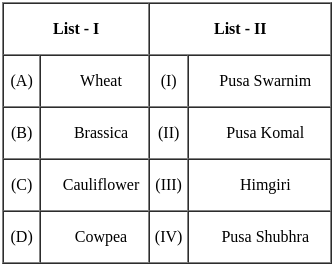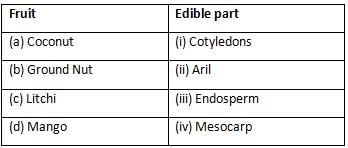Biology: CUET Mock Test - 5 - CUET MCQ
30 Questions MCQ Test CUET Mock Test Series - Biology: CUET Mock Test - 5
Who is the author of the book “The Principle of population”?
The suitable location for keeping the beehives is near the crop of:
Arrange the steps of 'Plant Breeding' in a correct sequence.
(A) Selection and testing of superior recombinants.
(B) Cross hybridisation among the selected parents.
(C) Collection of genetic variability.
(D) Evaluation and selection of parents.
Choose the correct answer from the options given below:
Match List - I with List - II.

Choose the correct answer from the options given below:
Match the fruits with the appropriate edible part:

Select the correct answer using the code below:
Match the following.

Select the correct answer using the code given below.
Which of the following does not belong to the Hardy Weinberg principle?
Poliovirus affects which pathway during paralysis of muscles?
Which region of an antibody is also called a ‘Fragment of Crystallization’?
The two key concepts branching descent and natural selection belong to ______ theory of evolution.
It is known that the total sum of all the frequencies of the allele is _____
In which of the following area the effect of Poliovirus is not fatal?
What is the approximate weight of Heavy and Light chains respectively?
Which of the following represents the Hardy Weinberg equation?
Which region of an antibody is also called as ‘Variable Region’?
Use and disuse theory was given by _______ to prove biological evolution.
The notation p and q of the Hardy Weinberg equation represent ________ of a diploid organism.
Who was known as the direct ancestors of homo sapiens?
Flavivirus group causes which of the following pair of diseases?
Lamarck used _______ as examples of use and disuse theory.
|
8 docs|148 tests
|





















